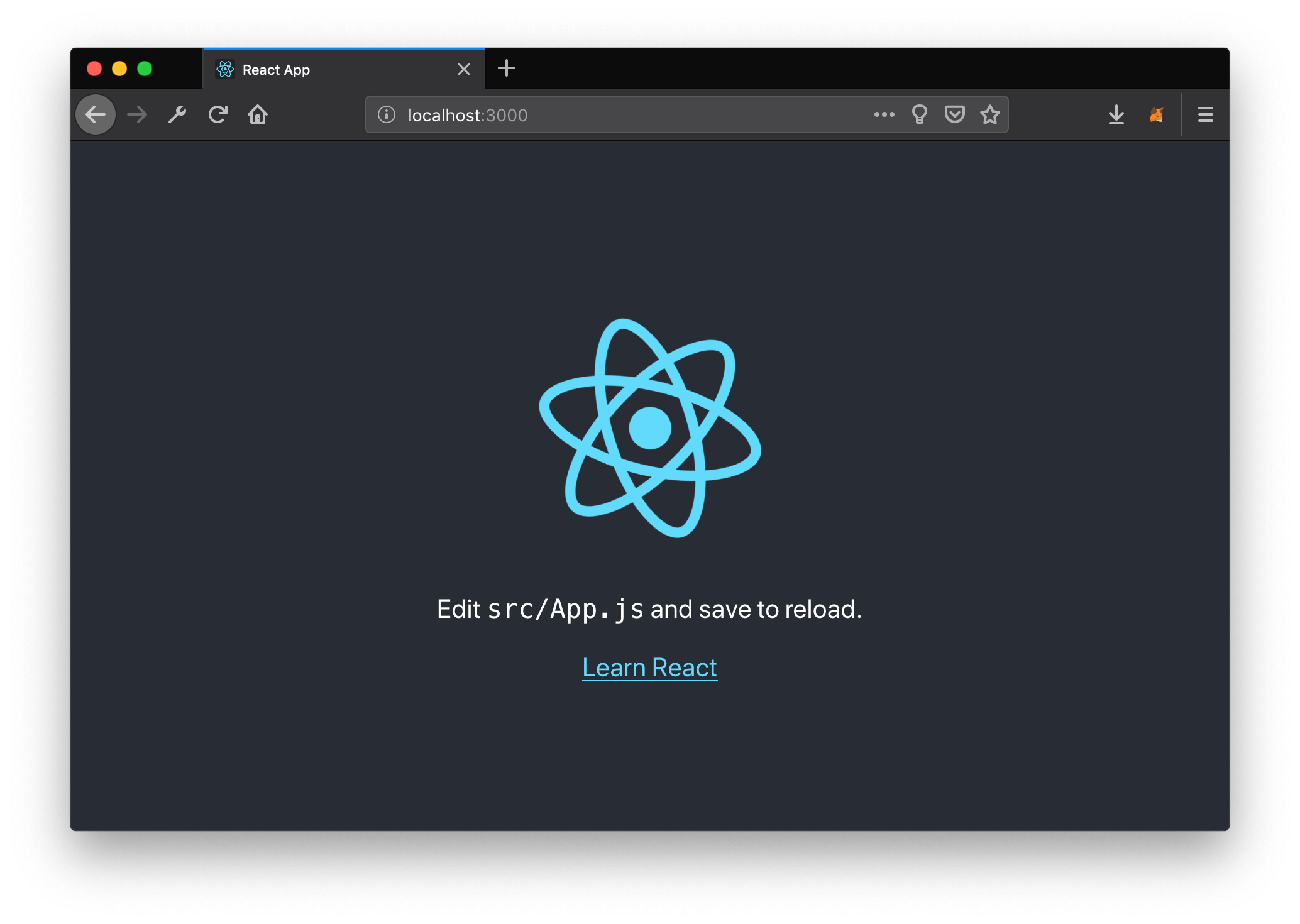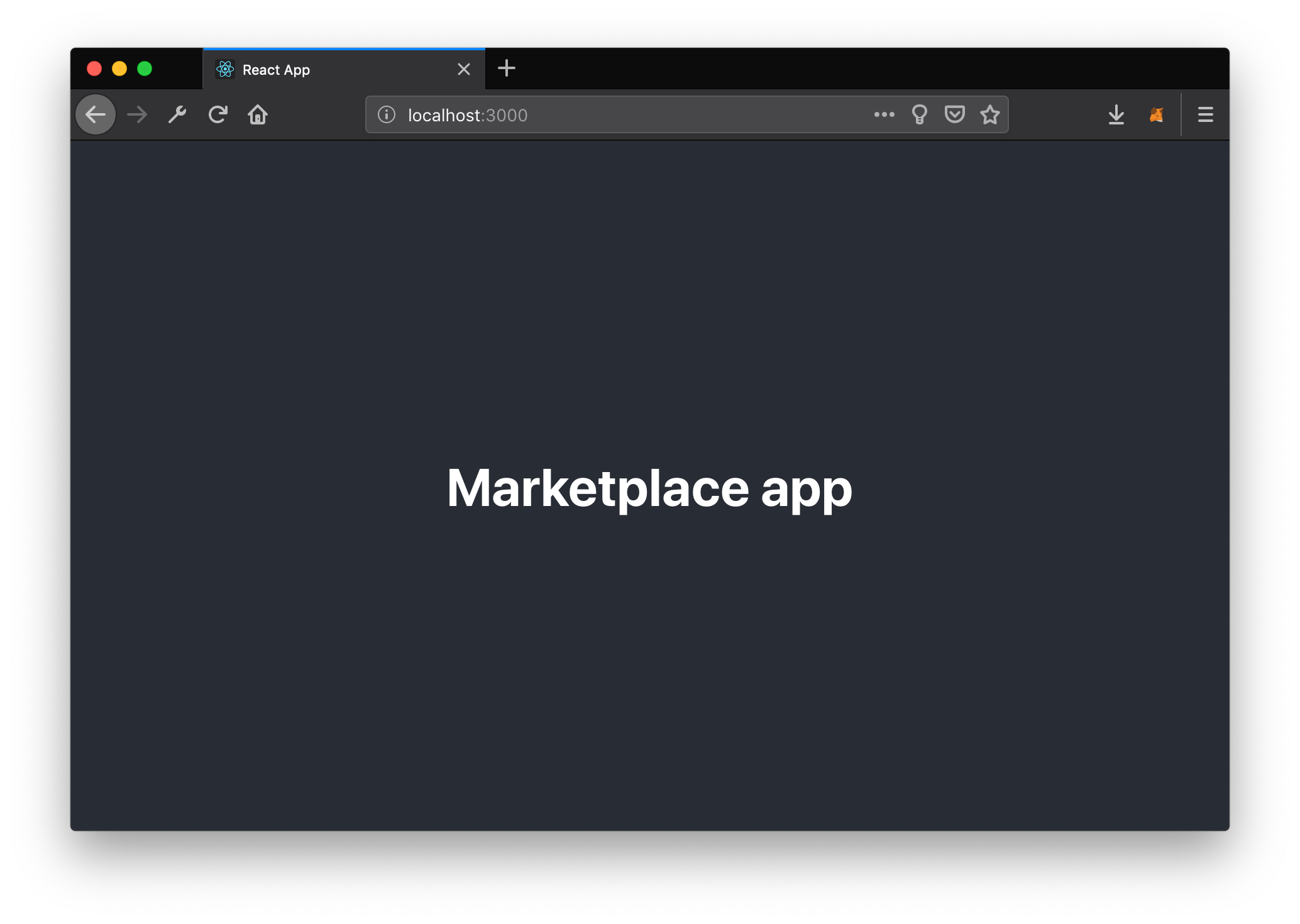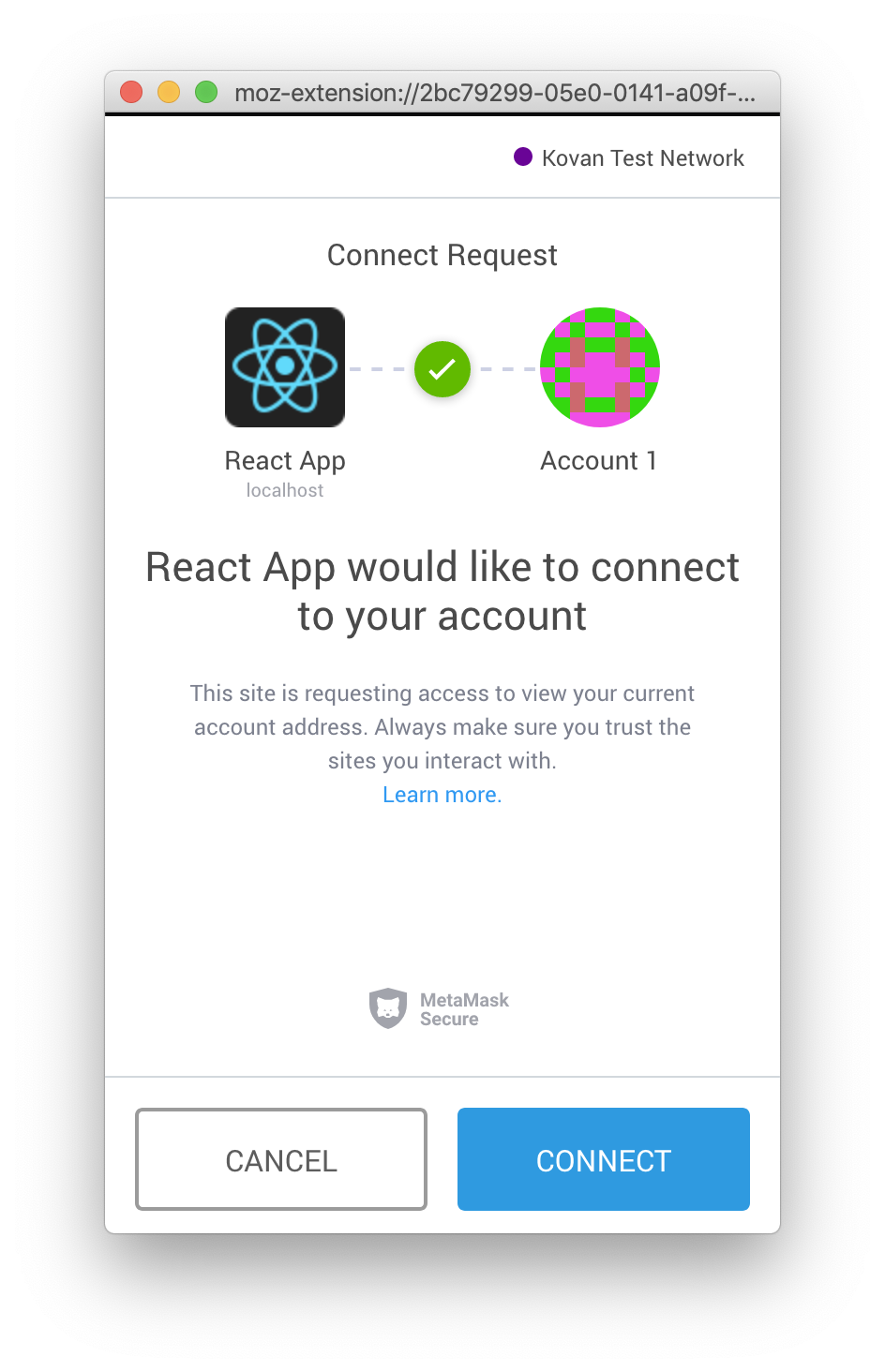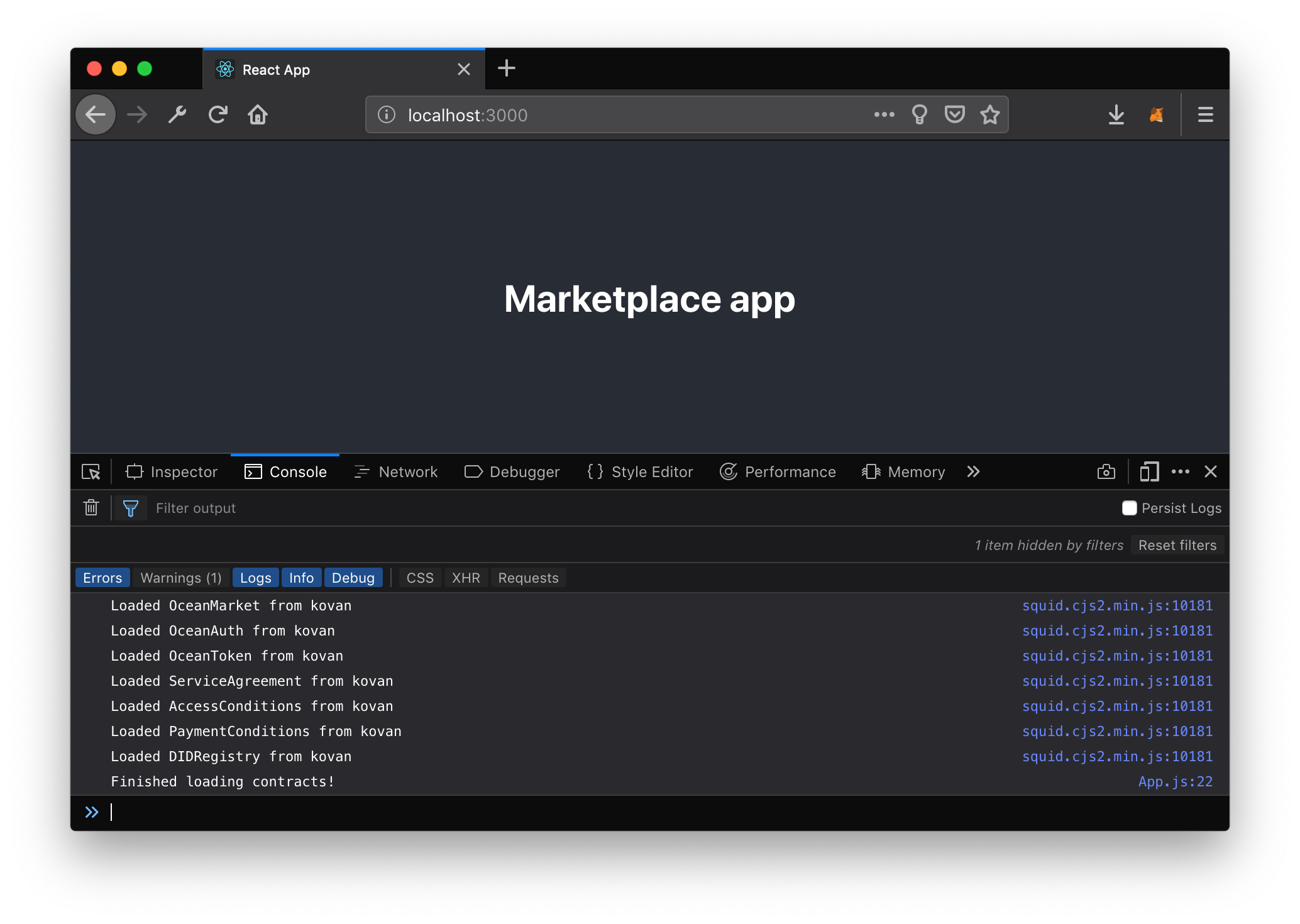4.9 KiB
| title | description |
|---|---|
| React App Setup | This tutorial shows how you can build a basic [React](https://reactjs.org/) app with [Create React App](https://github.com/facebook/create-react-app) that uses the squid-js JavaScript package to publish a data set, get a data set, and more. |
Requirements
-
Node.js>= 10 is installed. You can check usingnode -v -
npm>= 5.2 is installed. You can check usingnpm -v -
Spreelocal Ocean test network-
Git clone the oceanprotocol/barge repository, then in that directory:
-
(Optional but recommended) Clean out all your old Docker stuff using
docker system prune --all --volumes -
Use startup script in Barge to run a local Spree Testnet. Compiling and deploying the contracts takes some time so it takes a few minutes until the network is ready to be interacted with:
export KEEPER_VERSION=v0.9.1 export AQUARIUS_VERSION=v0.2.2 export BRIZO_VERSION=v0.3.5 ./start_ocean.sh --latest --no-pleuston --local-spree-node -
A Web3 capable browser, like Firefox/Chrome with MetaMask installed
-
Some Spree Ether in your MetaMask account
-
New Create React App
First, kickstart your new React app by creating a boilerplate with Create React App:
npx create-react-app marketplace
This will create a folder named marketplace with a boilerplate React app. Go into that new folder and add the Ocean Protocol JavaScript library and Web3 packages to the app's dependencies:
cd marketplace/
npm install @oceanprotocol/squid@0.5.5
At this point you can already run npm start which starts the app in your browser at localhost:3000:
Add Markup & Web3
Let's make it ours, open src/App.js and replace the whole source with:
// src/App.js
import React, { Component } from 'react'
import './App.css'
class App extends Component {
render() {
return (
<div className="App App-header">
<h1>Marketplace app</h1>
</div>
)
}
}
export default App
Below the import './App.css' line, let's import the packages we installed, set up web3 and unlock MetaMask accounts (if locked):
// src/App.js
import { Ocean } from '@oceanprotocol/squid'
import * as Web3 from 'web3'
const web3 = new Web3(window.web3.currentProvider)
window.ethereum.enable()
After those steps you should see this, and MetaMask should have asked you to allow access to your account:
Note: If you see an error like inpage.js:1 MetaMask - RPC Error: Internal JSON-RPC error. in your console.log, don't worry about it. It's a MetaMask thing.
Create Ocean Instance
Now that we are successfully connected with Web3, we can set up our Ocean instance.
At the beginning of your component (i.e. right after the class App extends Component { line), create a new Ocean instance with all configuration within the componentDidMount lifecycle method. All Ocean Protocol operations can be executed from this Ocean instance.
// src/App.js
//...
async componentDidMount() {
this.ocean = await new Ocean.getInstance({
web3Provider: web3,
nodeUri: 'http://localhost:8545',
aquariusUri: 'http://localhost:5000',
brizoUri: 'http://localhost:8030',
brizoAddress: '0x00bd138abd70e2f00903268f3db08f2d25677c9e',
parityUri: 'http://localhost:8545',
secretStoreUri: 'http://localhost:12001'
})
console.log('Finished loading contracts.')
}
//...
Final Result
That's it, if you have no errors in your console.log then you have successfully initialized an Ocean instance in your brand new React app and you are ready for the next part of this tutorial.
Here is the full source of src/App.js that you should have if you followed this tutorial:
// src/App.js
import React, { Component } from 'react'
import './App.css'
import { Ocean } from '@oceanprotocol/squid'
import * as Web3 from 'web3'
const web3 = new Web3(window.web3.currentProvider)
window.ethereum.enable()
class App extends Component {
async componentDidMount() {
this.ocean = await new Ocean.getInstance({
web3Provider: web3,
nodeUri: 'http://localhost:8545',
aquariusUri: 'http://localhost:5000',
brizoUri: 'http://localhost:8030',
brizoAddress: '0x00bd138abd70e2f00903268f3db08f2d25677c9e',
parityUri: 'http://localhost:8545',
secretStoreUri: 'http://localhost:12001'
})
console.log('Finished loading contracts.')
}
render() {
return (
<div className="App App-header">
<h1>Marketplace app</h1>
</div>
)
}
}
export default App
Move on to Publish a Data Set.



